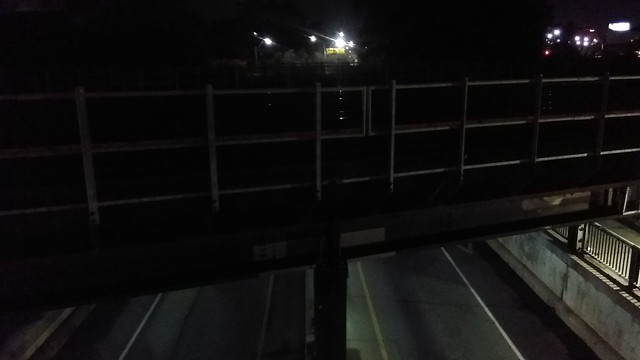I was wonderi0g past midnight on this warm summer night along Dupont west to the West Toronto Railpath, where the pedestrian and rail bridges stretch over the muraled street below.









The rainiest June and July in city records has made Toronto the country's soggiest city this summer, and has put 2008 on the fast track to be the city's wettest year ever.
Morning showers and flash afternoon storms yesterday brought Toronto's two-month rain tally up to 272.8 millimetres (10.7 inches) as of 2 p.m. yesterday, eclipsing the previous record for the same period with eight days left to go.
The two months of regular downpour made Toronto the only city shattering summer rain records. It also makes us the rainiest area in the country over that time, said Dave Phillips, Environment Canada's senior climatologist.
"Toronto is the wettest location in the country," he said. "Nowhere even comes close."
Add the saturated summer to the snow-laden winter, and we're easily on pace to beat a 30-year-old record for the city's wettest year ever, Phillips noted.
Routinely waterlogged cities like St. John's, Halifax, Thunder Bay and Prince Rupert, "can't hold a candle to Toronto" over the last two months, the weather guru said.
The action on the western edge of Bloorcourt Village is all about Dufferin station. The doors leading to the subway spit and swallow noisy teenagers, busy-busy commuters, over-it moms with Dora the Explorer headaches and posturing XXL toughs. Watching it happen with a Nova Era takeout coffee, a kicky oldster from the retirement home across the street offers bites of his Drumstick before asking if I’m married or "looking."
This corner is classic Bloorcourt. To the east and the west, though, the neighbourhood paradigm is changing. A short walk west along Bloor towards Lansdowne, into Bloordale Village, reveals the Toronto Free Gallery’s "Toronto Free Library" exhibit, a broad and radical take on libraries, art and community. Walk along Bloor in the other direction, from Dufferin toward Montrose Avenue, and you can pick up hardcore 7-inches at Hits and Misses, or play DJ at Disgraceland.
For the purposes of Toronto’s indiegentsia, it used to be that Bloorcourt, in particular, was a useful neighbourhood for occasional terror-drinking at the 12:30 (where pints were a quarter or five bucks, depending on the bartender’s mood), more reasonable and respectable fun at Hurricanes and Ethiopian food at tiny, delicious Nazareth. Mysterious bars and men’s clubs fell between cheque cashing-joints and appliance stores. (Jankie’s Place, at Bloor and Dovercourt, was a constant source of fascination when I lived on nearby Shanly Street.) On top of these and on pretty side streets north and south of Bloor, rent was cheap and the Ossington subway stop was handily in the middle.
[. . .]
As happens every year in a different ’hood, the “artsies/student types” have invaded Bloorcourt and Bloordale, beginning a sticky process of reshaping a diversely populated neighbourhood in their own image, and towards their own needs and interests. (Leslieville, Little Italy, Trinity-Bellwoods, Beaconsfield Village, The Junction and, notably, Parkdale are all past subjects.)
Though the establishment of a handful of indie-ish businesses isn’t heavy enough to constitute straight-up gentrification, it happens to be an inevitable step (between Step One: Skid Row Neighbourhood is Bad Yet Cheap and Appealing and Step Three: Young, Cool Careerists Buy Homes, Demand Bespoke Coffee Grinds and Baby Toys). Whether it’s possible to manage the gentrification process so that artsy revitalization might raise living standards for established residents and business owners without squeezing them out remains to be seen, but Bloorcourt’s transition is slow enough, for now, that the community might have an opportunity to decide for itself what goes down.